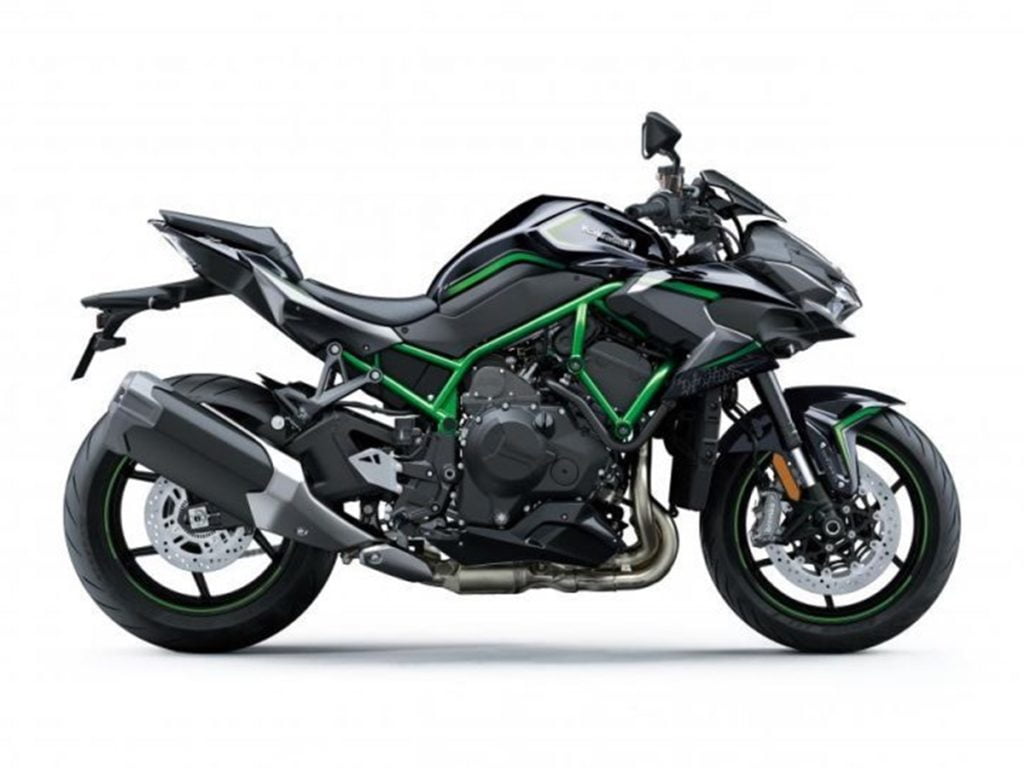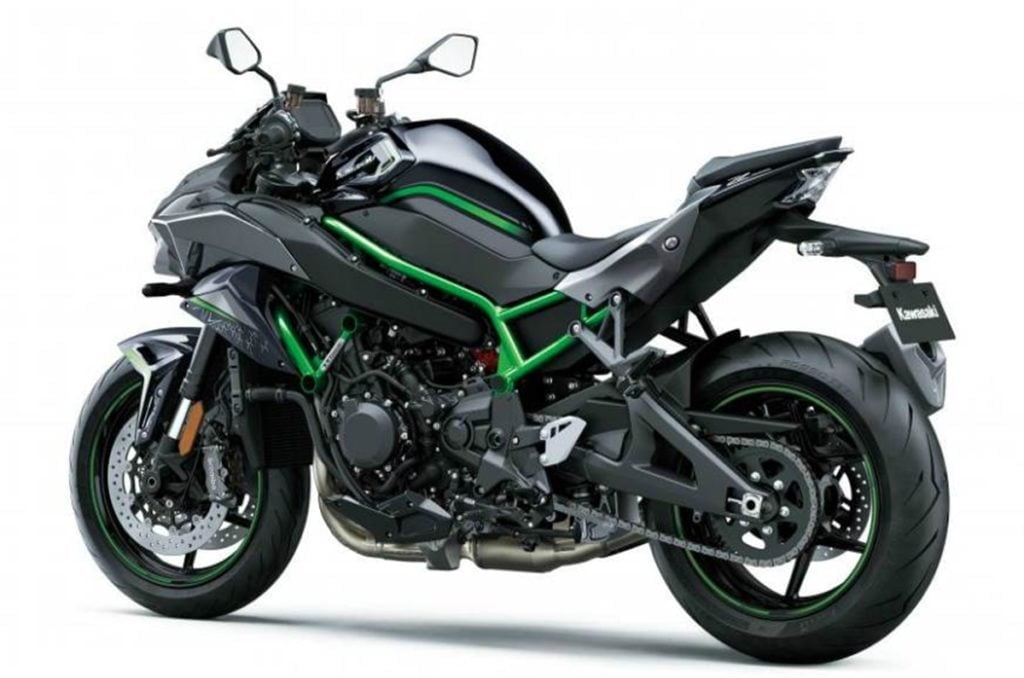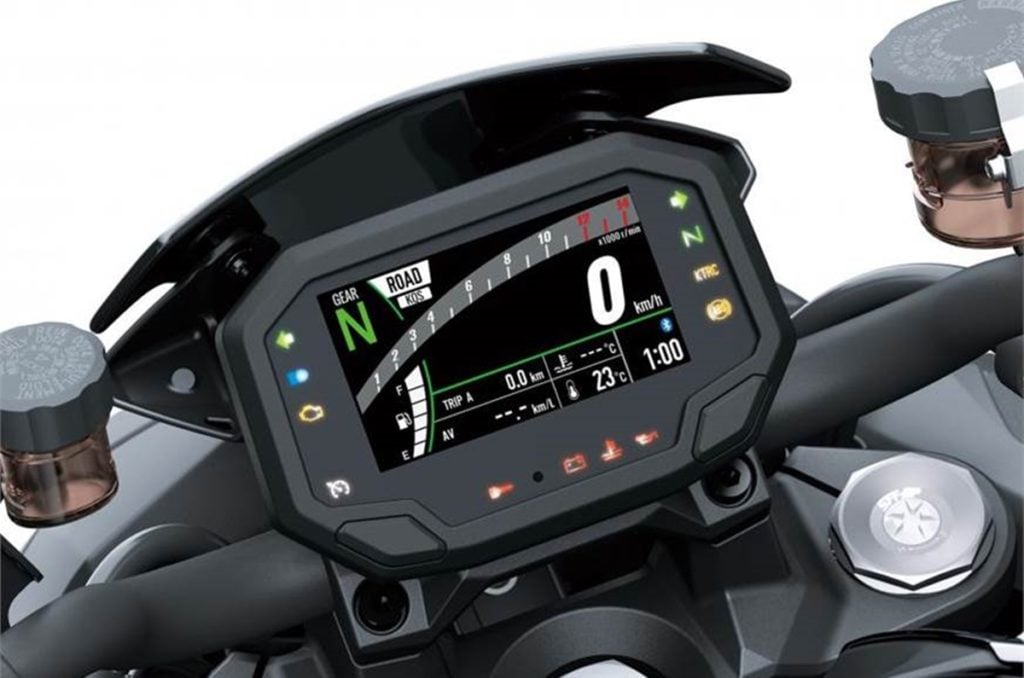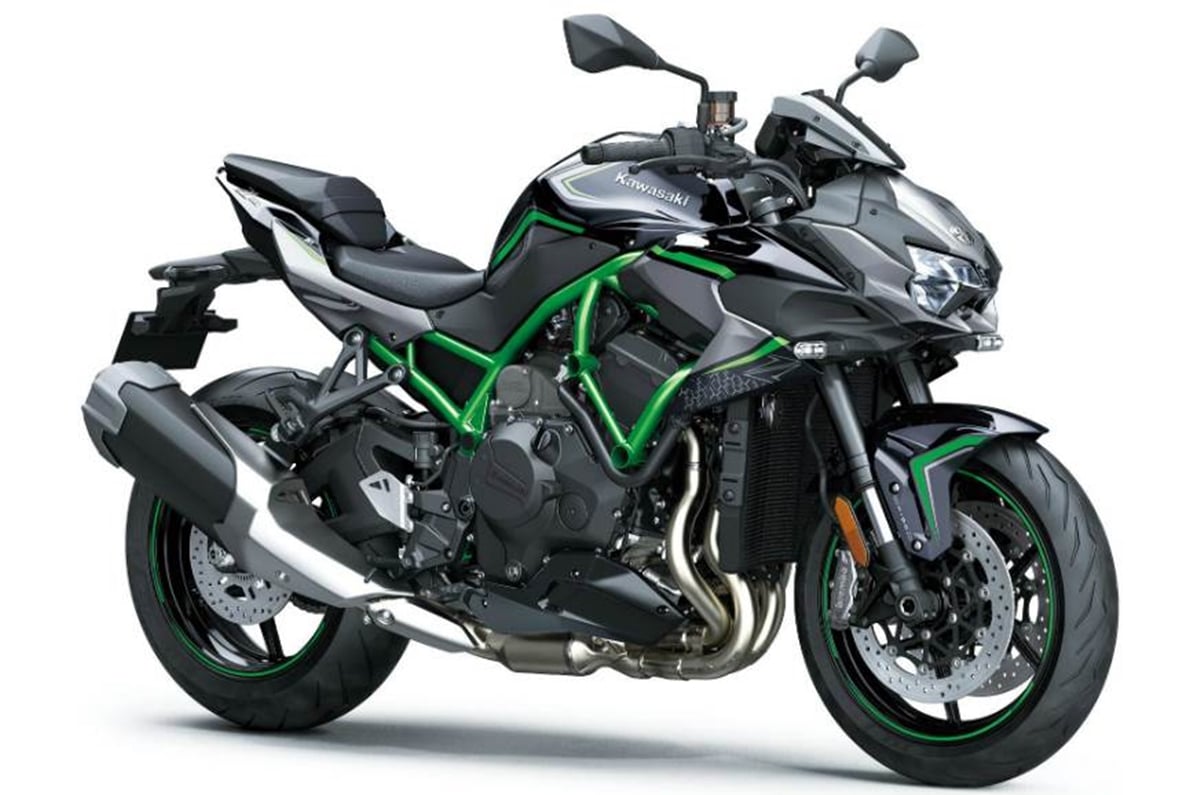The Kawasaki Z H2 uses the same engine as the Ninja H2 but has been tuned for better low-end and mid-range performance with a new suite of electronic rider aids.
Kawasaki has finally taken the wraps off the Z H2 hypernaked motorcycle at the 2019 Tokyo Motor Show. The Kawasaki Z H2 is the naked streetfighter sibling of the Ninja H2 superbike and and you can certainly tell that by the looks. It uses a supercharged 998cc engine and its bonkers. Let’s look at it in a little more detail.

The 998cc inline-four, supercharged engine in the Kawasaki Z H2 produces 200hp at 11,000rpm and 137Nm of torque at 8,500. The numbers are right up there with liter-class superbikes but its still not the most powerful motorcycle of its class. That honor goes to the mad MV Agusta Brutale 1000 Serie Oro which has a 211bhp of peak power. Coming back to the Z H2, despite it being based on the fully-faired Ninja H2, the Z H2 is actually heavier by 1 kg, having a kerb weight of 239 kg.
The engine comes nestled in between a trellis frame which has been painted in typical H2 family green shade. It does provide some contrast to the black and grey paint scheme that drapes the rest of the motorcycle. And while we are at the topic of looks, can you really ignore the design of the Z H2. This is quite easily the most intimidating hypernaked motorcycle out there. The mean-looking LED headlamp with two prominent fangs underneath give it a face unlike none; a floating fly screen completes the streetfighter look.

The massive fuel tank and huge tank extensions give the motorcycle a lot of visual bulk. Also, the intake for the supercharger is present only on the left side of the motorcycle, giving the Z H2 an asymmetric design. However, the main bulk of the design still remains that huge inline-four engine, giving it a lot of muscle. The tail section has been finished very neatly though and features a Z-pattern LED tail-lamp that’s a signature of the Kawasaki Z motorcycles. The exhaust pipe too is a bulky one and looks cohesive with the rest of the design.
Although the engine in the Z H2 is similar to the one in the Ninja H2, it has been tuned for better low-end and mid-range performance. However, all this power will be of no use if its not put down on the tarmac properly. For this purpose, the Z H2 comes loaded with a new suite of IMU assisted electronics.

There are four ride modes – Road, Rain, Sport and Rider – the last of which allows one to customise settings. There are also three power modes – Full (200hp), Mid (148hp) and Low (98hp) – which can be regulated depending on the tarmac or skill level of the rider. You also get Kawasaki Launch Control, Traction Control and Cruise control, all of which is operated via a fully-digital colour TFT LCD instrument cluster that also features Bluetooth connectivity – the first Kawasaki to get so.
Also Read : Benelli Leoncino 502C Power Cruiser India Launch Confirmed; Could Happen By End Of 2019
Other cycle parts on the Kawasaki Z H2 include a double-sided swingarm that’s attached directly to the rear of the engine – unlike the single-sided swingarm on the Ninja H2. Suspension duties are taken care by a fully-adjustable Showa Separate Function Big Piston Fork at the front and a Showa Uni Track, monoshock at the rear. Braking duties are performed by two radially-mounted Brembo M4.32 calipers, biting down on dual 290mm discs and a two-pot Nissin caliper at the rear and 226mm disc. The braking system is linked to Kawasaki’s Intelligent Anti-lock Braking system or KIBS, which, along with the IMU, offers rear-wheel lift mitigation while braking hard.

Also Read : Royal Enfield 650 Twins Receive A Minor Update; Prices Unchanged
Just like the rest of the Kawasaki supercharged range has made it to India, including the manic H2R, the Z H2 is also expected to eventually make it to our shores. Meanwhile, this monster aside, Kawasaki has also unveiled the Ninja ZX-25R which packs a 250cc, inline-four cylinder engine into a tiny entry-level sportbike form at the 2019 Tokyo Motor Show.


